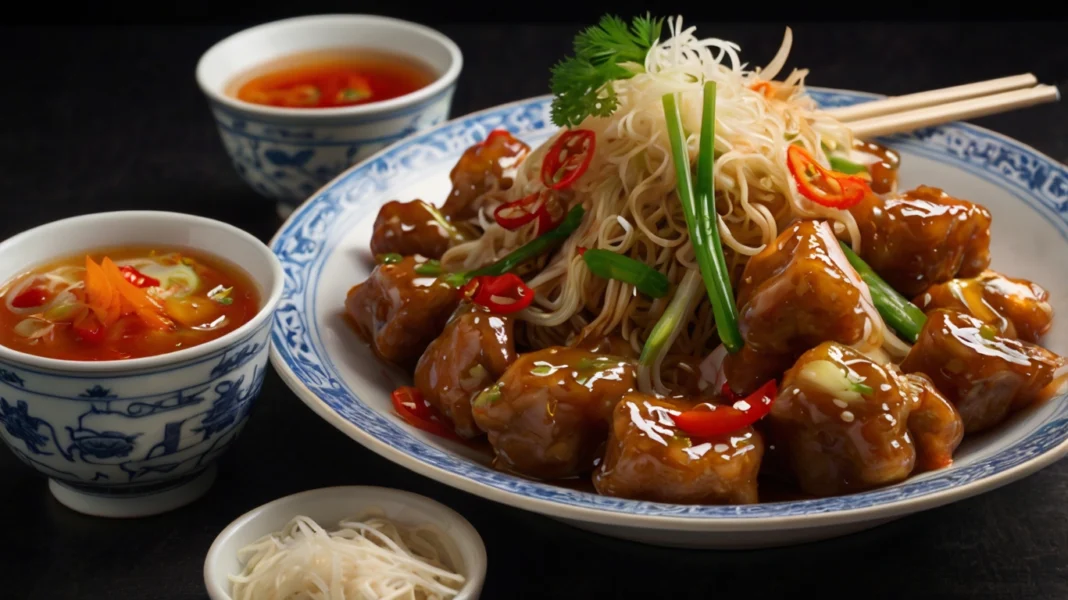Chinese cuisine in Britain has grown into an incredibly popular and unique fusion, blending the essence of authentic Chinese flavors with British tastes. Let’s take a look at the history, evolution, and popular dishes of British Chinese food to see how this culinary crossover has captured the hearts and taste buds of so many in the UK.
The Origins of Chinese Cuisine in Britain
Chinese cuisine was first introduced in the UK in the 19th century, primarily by Chinese sailors and laborers. Initially centered around port cities like Liverpool, Chinese food spread gradually, with the first established Chinese restaurants emerging in the 1920s. But it wasn’t until the mid-20th century that Chinese cuisine gained real popularity, thanks to a post-World War II appetite for international flavors.
How British Chinese Food Differs from Authentic Chinese Cuisine
British Chinese food has evolved to cater to local preferences, often using ingredients more readily available in the UK. Traditional flavors were adapted with sweeter and milder sauces, and some spices were toned down to appeal to British tastes. As a result, many British Chinese dishes are sweeter and less spicy than authentic Chinese cuisine.
Popular British Chinese Dishes
The most loved dishes in British Chinese cuisine are often versions adapted to British tastes. Some of these include:
- Sweet and Sour Chicken – A staple of Chinese takeaways, featuring battered chicken in a tangy sauce.
- Crispy Duck with Pancakes – Shredded crispy duck served with thin pancakes, hoisin sauce, and cucumber.
- Egg Fried Rice – A simple but iconic side, often ordered with almost any meal.
- Chicken Chow Mein – Stir-fried noodles with chicken and vegetables.
- Prawn Crackers – A crunchy starter that’s a must-have in many orders.
Fish and Chips vs. Chinese Takeaway: A British Dilemma
While fish and chips is the traditional British choice, Chinese takeout has become just as beloved, offering a flavorful alternative. This love for Chinese takeout is evident in the vast number of Chinese restaurants and takeaways across the UK, providing a mix of both cuisines for any craving.
The Most Iconic British Chinese Dishes
British Chinese cuisine has a few dishes that have become iconic in their own right:
- Sweet and Sour Chicken: A go-to for anyone craving a rich, flavorful sauce with a sweet kick.
- Crispy Duck with Pancakes: A traditional dish in many British Chinese restaurants that has become synonymous with Chinese dining in the UK.
- Chicken Chow Mein: Popular for its savory taste and filling nature.
- Egg Fried Rice: This classic side is an essential pairing with most main dishes.
- Prawn Crackers: A crispy, light snack that’s typically complimentary with takeaway orders.
Adaptations in British Chinese Restaurants
Many British Chinese restaurants have adjusted their recipes over the years to fit the local palate, adding more sugar and creating less spicy versions of popular dishes. You’ll also find some Western ingredients in these dishes, like peas in fried rice or carrots in sweet and sour dishes.
Vegetarian and Vegan Options in British Chinese Food
As plant-based diets grow, British Chinese cuisine is adapting. Many restaurants now offer vegetarian versions of popular dishes, such as vegetable chow mein or tofu in black bean sauce. Vegan adaptations have become increasingly common too, allowing everyone to enjoy the flavors of British Chinese food.
Cultural Fusion: British-Chinese Ingredients and Cooking Techniques
British Chinese food represents a fascinating fusion of culinary techniques and ingredients. From stir-frying to deep-frying, Chinese techniques are often combined with British ingredients. This cultural blend reflects the way British Chinese cuisine has grown to cater to British expectations while maintaining Chinese culinary traditions.
Takeaways and Delivery: The Role of British Chinese Food in Modern Life
The takeaway culture in the UK has embraced British Chinese food wholeheartedly. It’s one of the most popular choices for delivery, beloved for its variety, flavors, and affordability. Whether it’s a Friday night treat or a quick lunch, Chinese takeaway has become a staple.
Regional Variations in British Chinese Food
Across the UK, there are slight differences in how British Chinese food is served. For instance, some areas have spicier dishes influenced by more traditional Chinese flavors, while others keep a milder, sweeter taste profile that is very much British.
Health Aspects of British Chinese Food
British Chinese food offers both indulgent and healthy options. While some dishes, like sweet and sour chicken, are fried and calorie-dense, others, such as vegetable stir-fries, provide a lighter alternative. Many restaurants now offer low-sodium soy sauce or steamed dishes for health-conscious diners.
The Role of British Chinese Food in Social Gatherings and Celebrations
Chinese food in the UK is a common feature at gatherings, whether family dinners, parties, or celebrations like the Chinese New Year. The cuisine’s variety ensures there’s something for everyone, making it ideal for sharing and social occasions.
British Chinese Food and Pop Culture
British Chinese food has made its way into British pop culture, appearing in movies, TV shows, and books as a symbol of comfort food. It’s often associated with a cozy night in or a social gathering, reinforcing its place as a cultural staple in the UK.
Conclusion
British Chinese food is a remarkable fusion that brings together the flavors of two cultures, creating a cuisine that’s both familiar and exciting. Its rich history, adaptability, and role in British life make it a beloved part of the UK’s food culture. As the cuisine continues to evolve, it remains a unique reflection of the cultural exchange between Britain and China.
Also Read This Article Chinese Food




